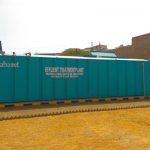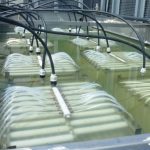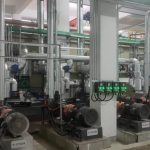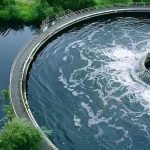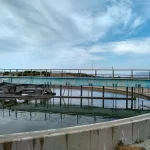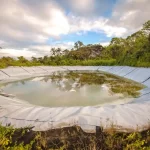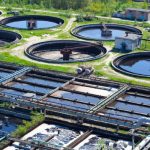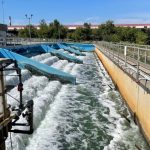-
-
Call for inquiry
-
B-21, Block-2, Gulshan-e-Iqbal
Karachi, Pakistan

Understanding Sewage Treatment Plants (STP): Safeguarding Health, Environment, and Sustainability in Pakistan
Introduction
Water is life — but without proper wastewater treatment, it quickly becomes a source of disease and pollution. In Pakistan, where only about 1% of wastewater is treated before discharge (UNICEF, 2022), the rest flows untreated into rivers, canals, and the sea. Cities like Karachi, Lahore, and Faisalabad release thousands of litres of untreated sewage daily into natural water bodies, causing environmental degradation, waterborne diseases, and urban flooding.
This is where Sewage Treatment Plants (STPs) come in. They form the backbone of modern sanitation systems, ensuring wastewater from households, industries, and commercial hubs is treated effectively before re-entering the environment. Beyond the technical processes, STPs are guardians of public health, protectors of ecosystems, and vital tools for Pakistan’s sustainable development.
Why Sewage Treatment Plants Matter in Pakistan
The importance of STPs goes far beyond infrastructure:
- Environmental Protection
Untreated sewage contains toxic chemicals and organic matter that choke rivers like the Ravi in Lahore and pollute Karachi’s coastal waters. STPs restore life to these water bodies by filtering out contaminants. - Public Health Safety
Over 53,000 children die every year in Pakistan due to waterborne diseases (UNICEF). By disinfecting sewage, STPs reduce risks of cholera, typhoid, and hepatitis outbreaks. - Water Conservation
With Pakistan declared as a “water-stressed country” by the World Bank, reusing treated wastewater for irrigation, flushing, and industrial cooling reduces pressure on freshwater reserves. - Restoring Water Bodies
Proper STPs can give life back to polluted lakes, rivers, and streams. Imagine the Ravi River in Lahore or Karachi’s Malir River flowing clean again — STPs make this vision possible. - Regulatory Compliance
The Pakistan Environmental Protection Agency (Pak-EPA) mandates effluent standards. Industries and municipalities need STPs to meet these laws and avoid penalties.
How STPs Work: The Treatment Process
STPs follow a step-by-step approach:
- Preliminary Treatment – Screens remove debris and grit.
- Primary Treatment – Sedimentation tanks separate sludge and oils.
- Secondary Treatment – Microorganisms break down organic matter in activated sludge systems or bio-towers.
- Tertiary Treatment – Advanced filtration removes nutrients, heavy metals, and chemical pollutants.
- Disinfection – UV, ozone, or chlorination kills pathogens.
- Sludge Management – Sludge is turned into biogas or compost, feeding Pakistan’s push for renewable energy.
The Future of STPs in Pakistan
With growing populations and climate challenges, Pakistan’s future depends on modernizing its wastewater management. Promising trends include:
- Decentralized STPs – Compact treatment plants for housing societies, universities, and factories.
- Energy-Efficient Operations – Biogas recovery from sludge to power STPs.
- Smart Monitoring – IoT-based sensors for real-time quality checks.
- Green STPs – Using wetlands and natural filters, especially for rural communities.
- Circular Economy – Turning sewage into clean water, fertilizer, and energy.
STPs and the Sustainable Development Goals (SDGs)
Sewage Treatment Plants directly contribute to the UN Sustainable Development Goals (SDGs):
- SDG 6: Clean Water and Sanitation – Ensuring safe wastewater management and water reuse.
- SDG 11: Sustainable Cities and Communities – Reducing pollution and improving urban resilience.
- SDG 14: Life Below Water – Protecting rivers, lakes, and marine ecosystems from sewage pollution.
- SDG 3: Good Health and Well-being – Preventing waterborne diseases.
- SDG 7: Affordable and Clean Energy – Generating renewable biogas from sludge.
By investing in STPs, Pakistan is not just treating wastewater — it is directly contributing to the global sustainability agenda.
Conclusion
Sewage Treatment Plants are not just technical utilities; they are pillars of sustainable living. In Pakistan, they are the answer to polluted rivers, unsafe drinking water, and urban flooding. By treating sewage, STPs:
- Safeguard public health
- Revive dying rivers and lakes
- Conserve precious freshwater
- Create renewable energy from waste
- Help Pakistan achieve SDGs
By embracing innovative technologies and fostering collective action, we can ensure that every drop is reused efficiently, transforming today’s waste into tomorrow’s resource. This transformation aligns with the vision of a water-secure and sustainable future, ensuring no one is left behind on the path to universal sanitation.
If Pakistan wants a future with clean rivers, safe communities, and sustainable cities, then STPs must be at the heart of urban planning. Investing in them is not an expense — it’s an investment in a cleaner, healthier, and more resilient Pakistan.

